A while back, one of my friends posted about a very intriguing taobao find: a tea steamer. Instead of a regular kettle with a filter, this tea steamer is supposed to make tea by steaming it (and condensing the steam into tea). According to their promo material, this is a good way for making tea and since it wasn’t too expensive, I got one tea steamer to try.
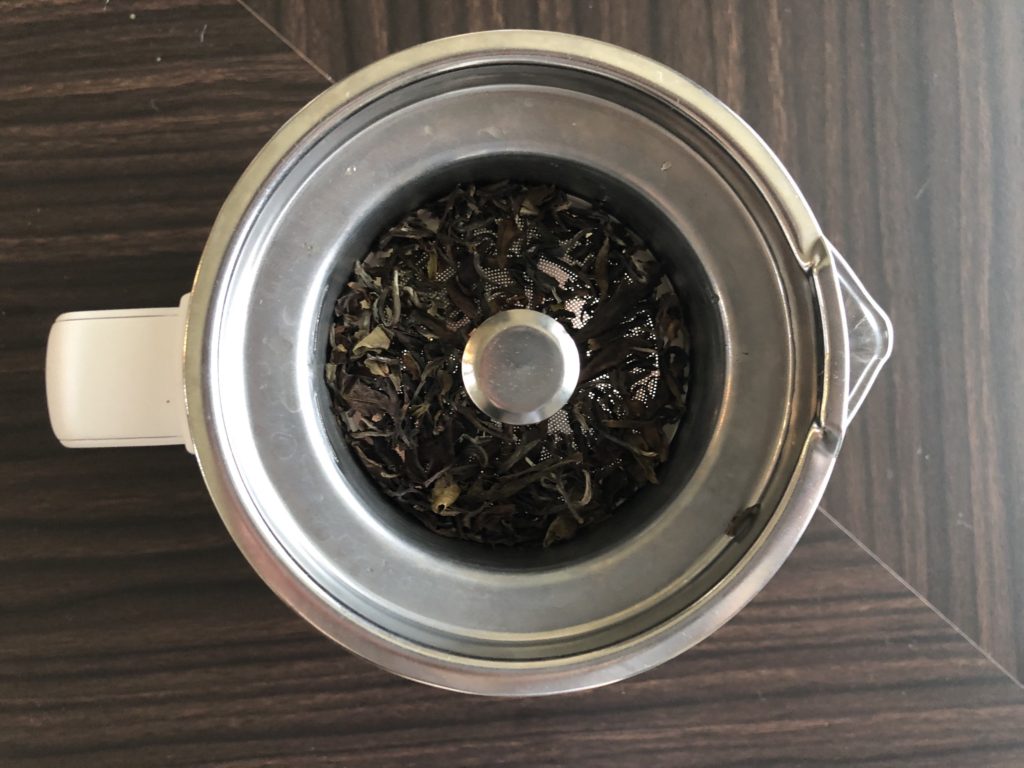
General Thoughts about the Tea Steamer
I’ve made a video where you can see the tea steamer in action, but generally, I think this is a great addition to the office. If you don’t want to watch the video, here are the main points:
- This is like making tea Western-style, so don’t expect to infuse those Lupicia flavoured teas twice.
- The tea steamer is a little noisy but not noticeable once you’re away from the desk
- It’s perfect for the office because it’s practically impossible to oversteep the tea when you’re using a tea steamer since the leaves aren’t infused in the water.
- The tea filter/cage part has a spring that likes to come unsprung, but apart from that, it seems to be working pretty well. My friend got the same model and she doesn’t have any complaints.
So now that we have an overview of what a tea steamer is, it’s time to compare the two!
Tea Steamer vs Gaiwan
As you can tell from my tea reviews, I like brewing tea in a gaiwan, gongfu-style. But, different teas are going to be suited to different vessels, so I wanted to compare the tea steamer to the gaiwan to see how it really stacks up.
As a note before we start: I generally compared the first steep (and sometimes the second) with the first batch of tea from the tea steamer.
Round 1: Darjeeling Rohini ‘Honey’ Oolong Tea
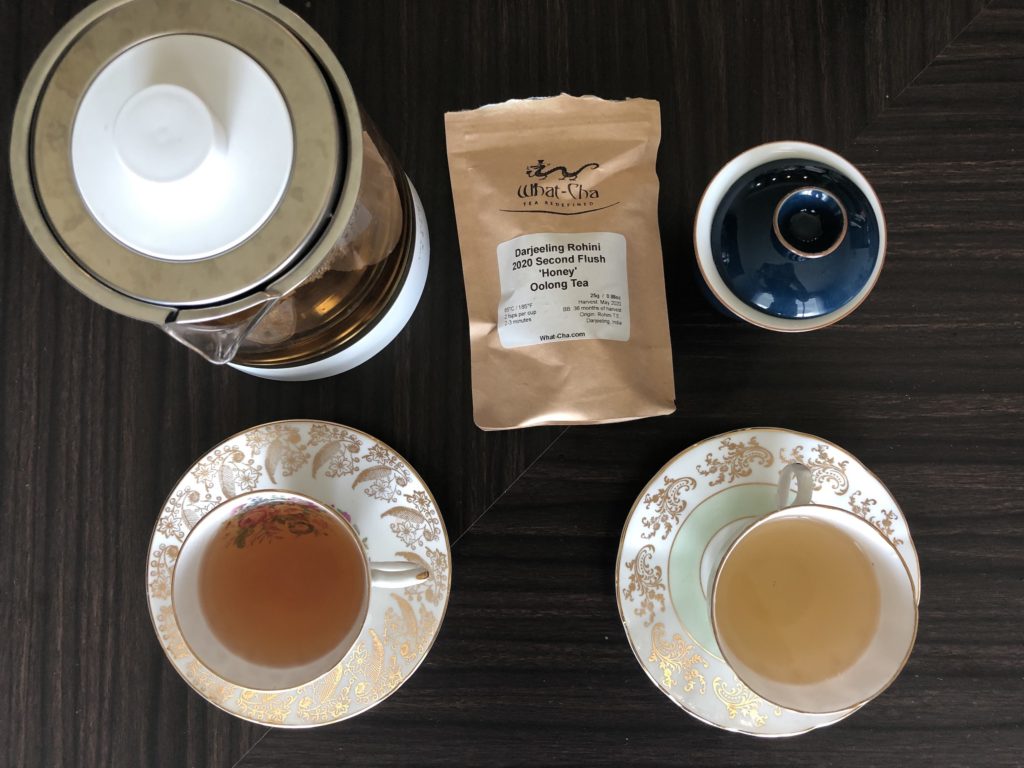
Steep one 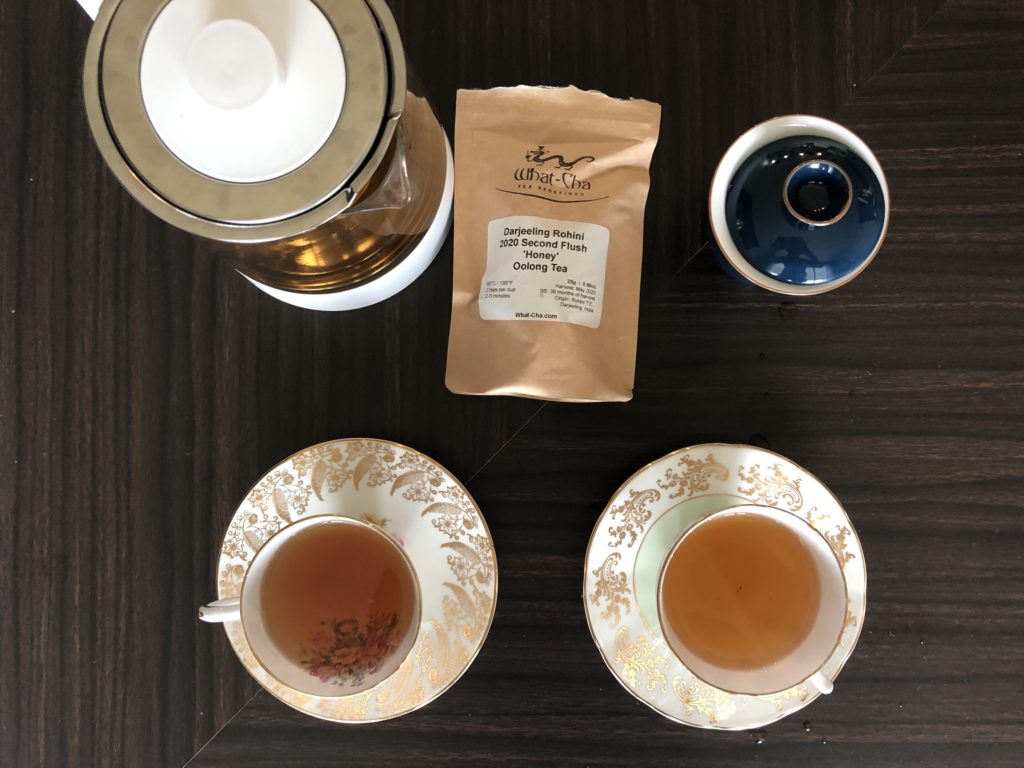
Steep 2
Gaiwan: The tea from the gaiwan is a lot lighter, which makes sense because it’s the first steep. The tea is light and floral tea, in line with what I got in my original review of the tea leaves. The tea liquor is also brighter, which you can see the second picture.
Tea Steamer: Compared to the tea liquor from the gaiwan, the tea liquor from the tea steamer is a lot darker, and looks like what you get from the second or third round of the gaiwan. In terms of taste, the tea here is full-bodied, with strong woody, fruity, and sweet notes.
Verdict: Oddly enough (because I expected the gaiwan to win for an oolong), I preferred the tea from the tea steamer because it packed all the flavours together and was so good! The gaiwan is good for getting to know the tea and picking out which flavour is released first, but if you want that one, perfect cup, go for the tea steamer.
Score: Tea Steamer – 1, Gaiwan – 0
Round 2: Santomi Black Tea (Wakoucha)
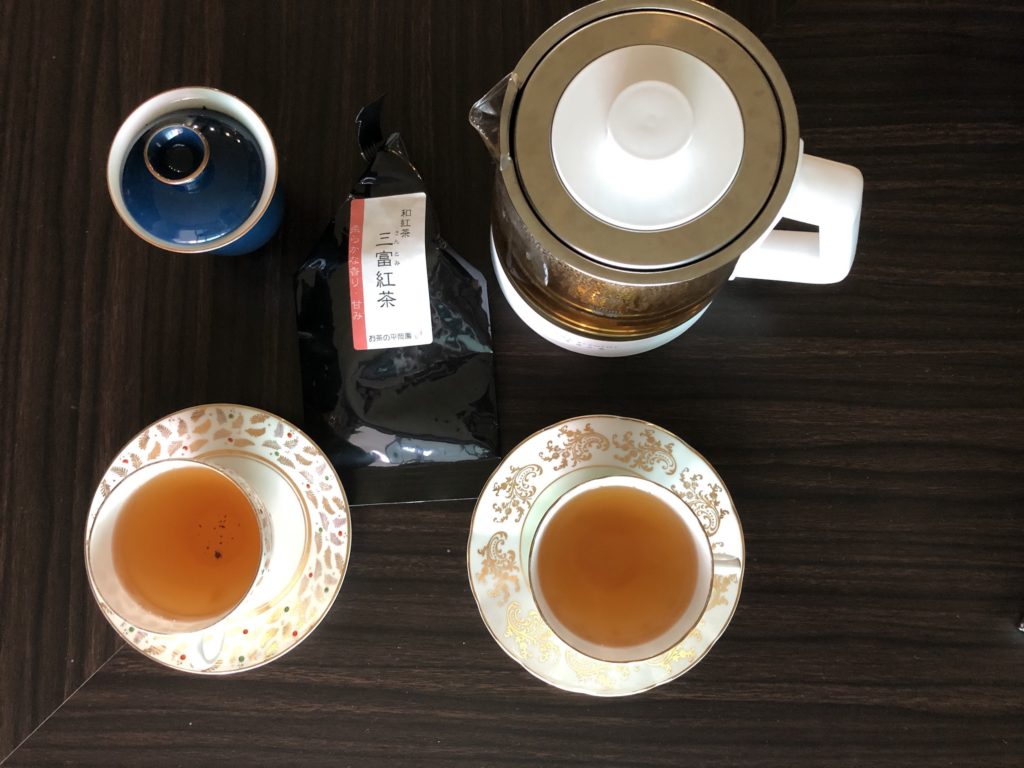
The shade of the tea liquor is the same for both, but the one made with a gaiwan looks a bit brighter in real life. Both of them had similar notes (more details here), just different flavour intensity so I will skip straight to the verdict.
Verdict: For me, the tea liquor from the gaiwan definitely tastes better – the tea from the tea steamer tasted a bit more diluted. It’s probably a tea to water ratio thing, come to think of it, given that the original instructions were to make this with 3g of tea to 150ml of water. So while I did increase the amount of leaves for the tea steamer, it probably wasn’t enough (and wouldn’t be enough unless I wanted to cram the leaves in).
Score: Tea Steamer – 1, Gaiwan – 1
Round 3: Sayama Kaori (Sencha)
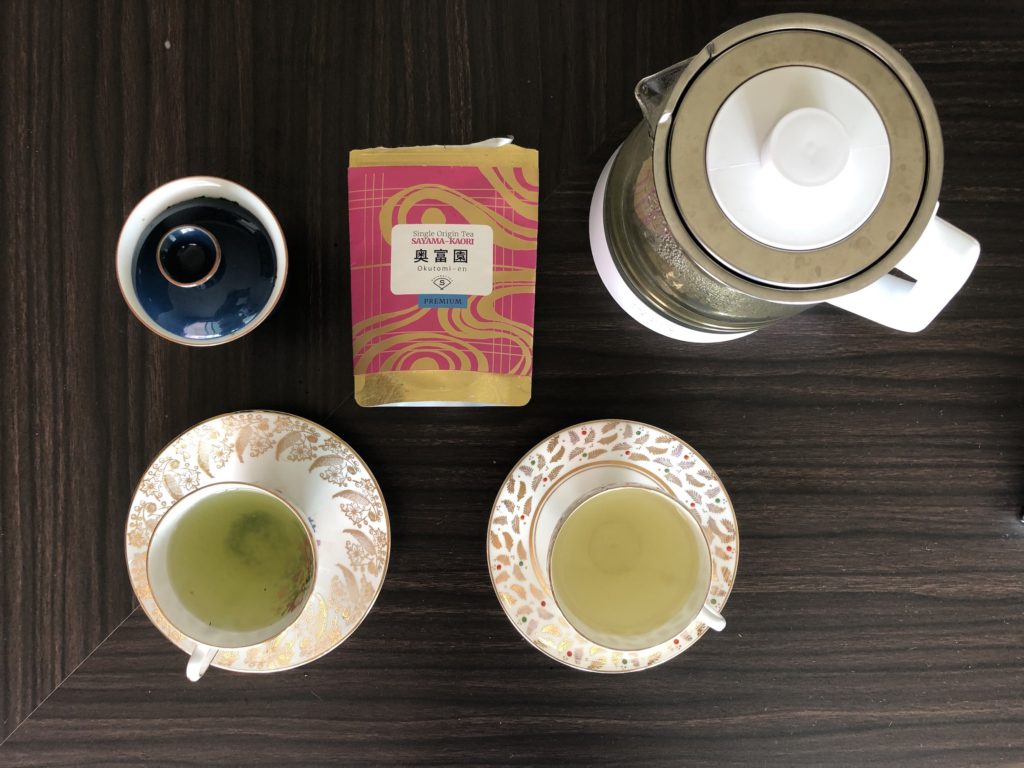
I should have made this in a kyusu but I didn’t want to bring too many teaware pieces into this comparison.
Gaiwan: This looks like a typical sencha with its darker green liquor. It’s definitely harder to make a sencha in a gaiwan because the leaves keep escaping, but the tea looks and tastes like what I expect sencha to look and taste like. The taste was pretty much how I described it in my original review.
Tea Steamer: The tea from the tea steamer was a pale yellow-green tea liquor and not matter how long I steam the tea, the tea liquor wouldn’t darken. Surprisingly, the tea was not bitter despite the fact that the water was boiling – what I got were light grassy and vegetable notes.
Verdict: The gaiwan definitely wins this round – the mouthfeel of the tea is better and the grassy and vegetable notes are stronger. That said, sencha can be finicky to make in a gaiwan, so I can see this being a very valid alternative for sencha days at the office.
Score: Tea Steamer – 1, Gaiwan – 2
Round 4: Ripe Puer
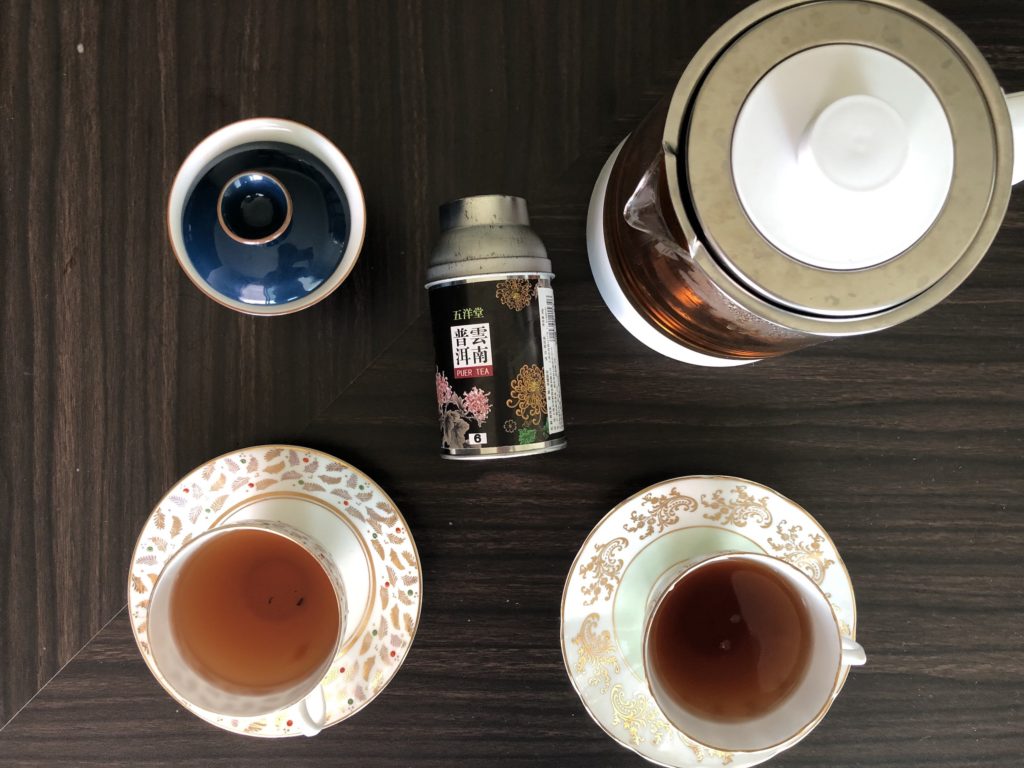
Gaiwan: The first round of tea from the gaiwan was much lighter, but by the second steep, I got the usual earthy notes that ripe puer has.
Tea Steamer: The tea steamer tea liquor is darker from the start. Interestingly, this is the one tea that I can use the auto-steam function for (for the rest of the tea, I find it easier to manually start and stop the steaming process). The flavours here are basically the same as the flavours in a gaiwan from the second steep onwards.
Verdict: The tea steamer. This was pretty hard to judge because it was pretty much a tie in terms of taste, but the tea steamer has a slight edge because of how convenient it was to make tea in it.
Score: Tea Steamer – 2, Gaiwan – 2
Overall Verdict
It’s a tie! Personally, I like using the gaiwan when I’m reviewing teas and getting to know them a bit more because I find that it releases the flavours progressively, but the tea steamer is great for teas that are suited for Western-style brewing and very handy for the office. I can see myself continuing with the gaiwan for WFH days and leaving the tea steamer in the office for when I’m working there.
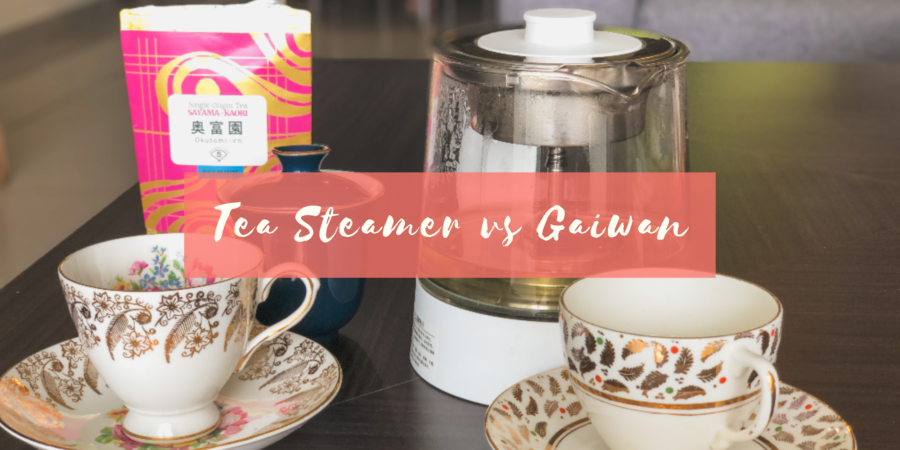
I hadn’t heard about tea steamers. This was an interesting experiment! I sort of wanted the gaiwan to win LOL
Me too! I totally expected the gaiwan to win handily! But I love the fact that even with white and green teas, the tea steamer has never made a bitter cup of tea despite the fact that the water has to boil. Such a treasure for the office!
This is so interesting! I love learning about different methods of making tea!!
Thank you! It was really fun experimenting with them!